400 years of metamorphosis: Theodor de Bry and Natalie Taylor on Jaques le Moyne De Morgues
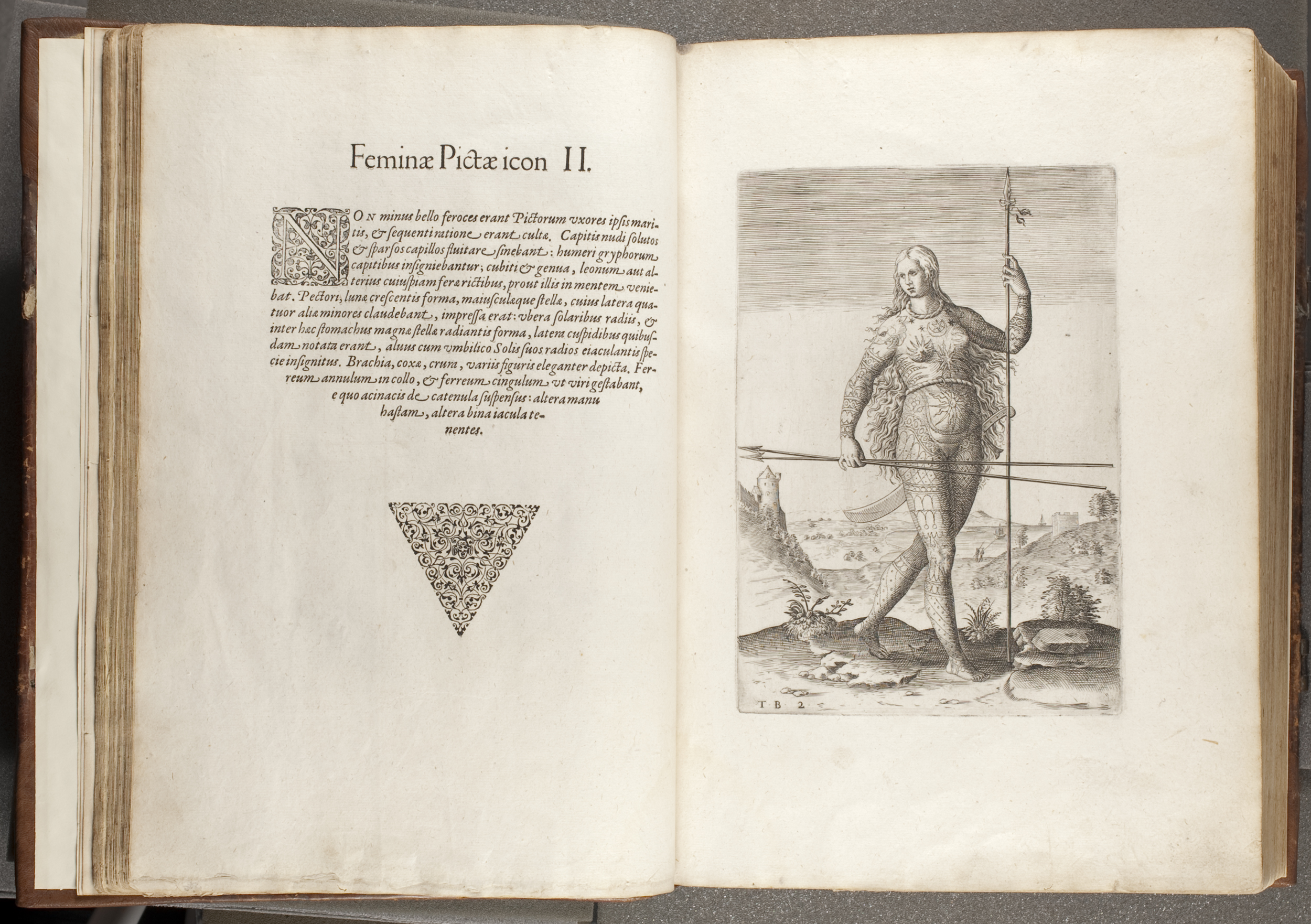
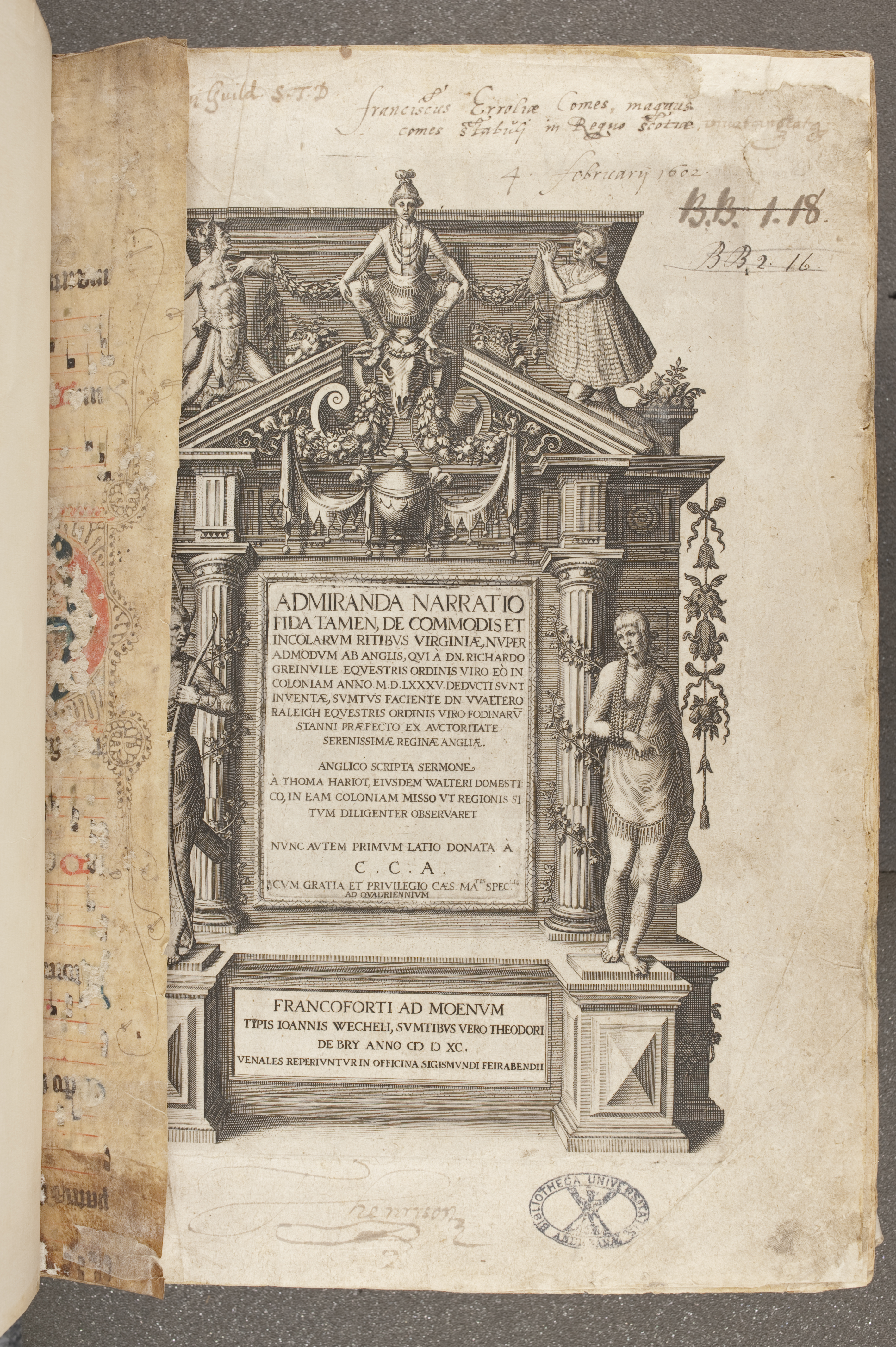
In November 2011 a post on this blog highlighted Theodor de Bry’s Grand Voyages. This is a hefty and multi-faceted tome, and, as a reprographic technician, I was encouraged to peruse it and capture any image that stood out to me. One such image was ‘The true picture of a young daughter of the Picts,’ one of a series of five figures in de Bry’s work, representing Picts and Ancient Britons.
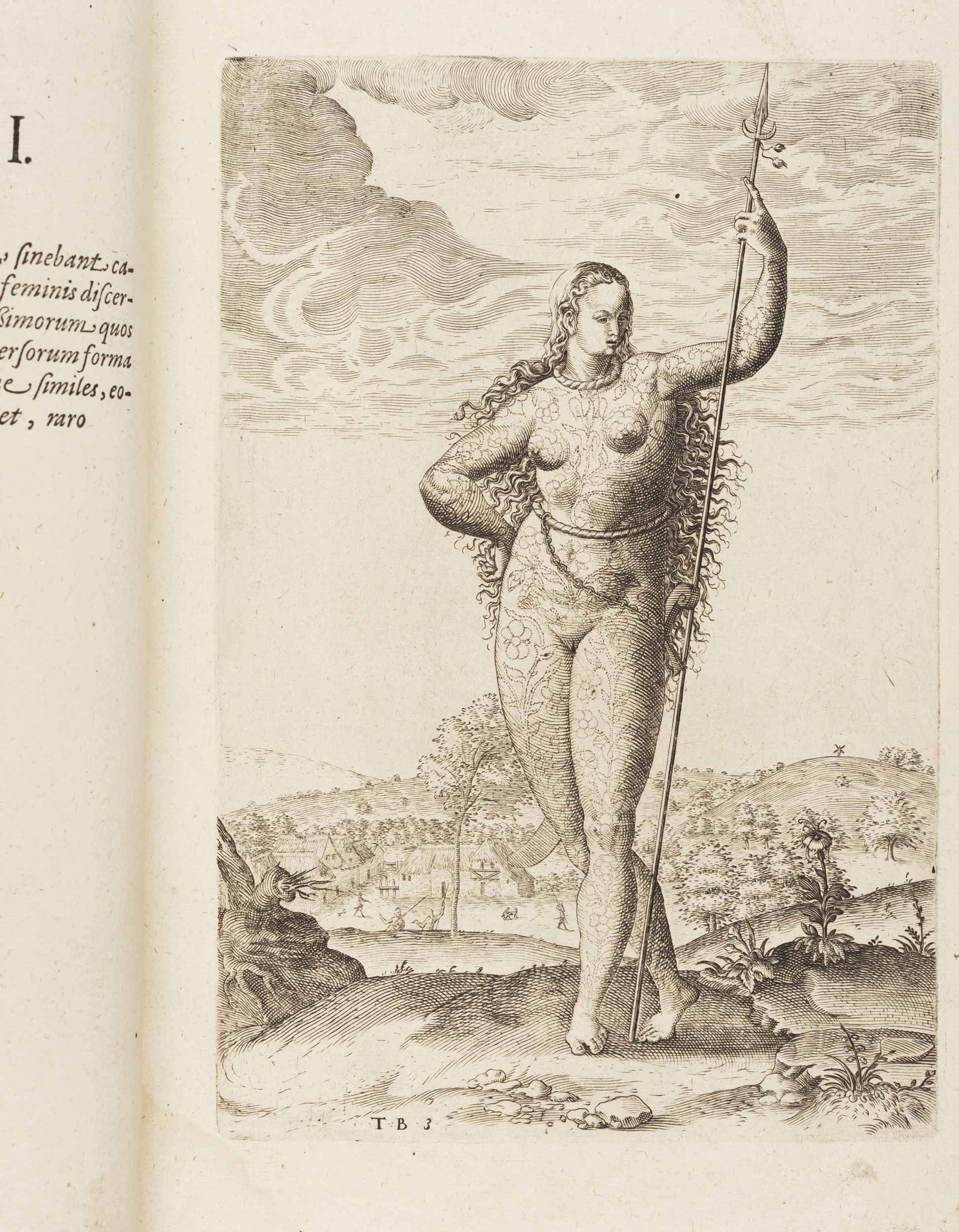
The first striking feature was how iconographic the stance and figure are. The delicate floral motif and gentle demeanour on this supposed ‘savage’ were also interesting.
Fast forward to June 2013, during a visit to the Aberdeen Art Gallery, when I came across the stunning tapestry, Force of Nature, by local artist Natalie Taylor.
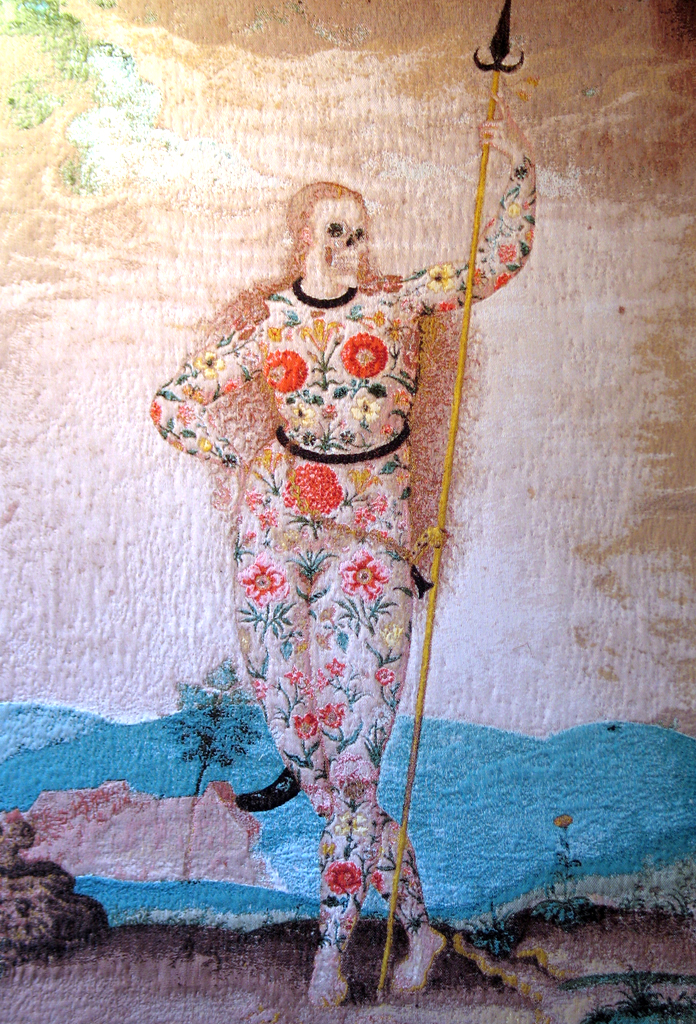
When I first saw the piece I thought it was a brilliant take on De Bry’s engraving. However, I have since learned that De Bry’s piece and the modern tapestry were actually both derived from the same watercolour: A Young Daughter of the Picts by painter and traveler Jacques Le Moyne de Morgues, dated 1585. The original is held at the Yale Center for British Art’s Prints & Drawings Collection.
Intrigued by how this contemporary interpretation came about, I contacted the artist, who generously shared the following details about her creation:
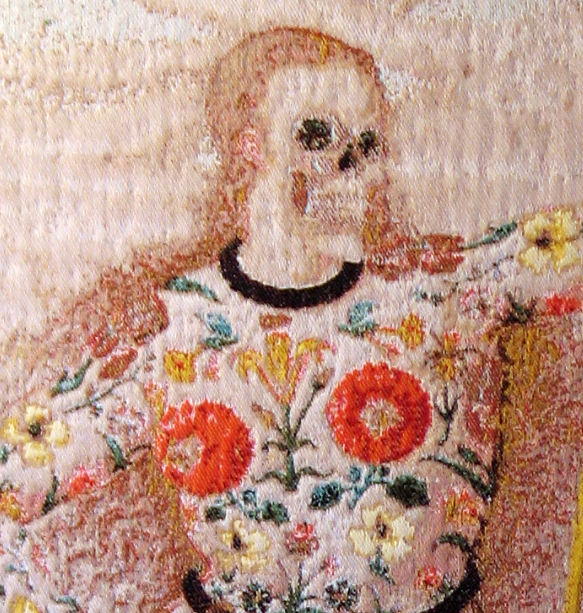
“I had admired the Jaques le Moyne De Morgues image Daughter of the Picts for many years, making a tribute collage cut from flower catalogues as a sketch in response, with a skull in place of the face. The naked tattooed woman, in warrior pose presented a strong image of female fertility and strength, along with an undercurrent of the demise of a long- gone culture. How alike our own culture was the Pictish culture? Like their culture, would ours eventually disappear too?
So I had in mind the idea of creating an image of both abundant, fertile life and death. However, this idea lay in the ‘holding bay’ of my creative output for ages until I heard of the Textiel Museum, Tilburg through my Dutch friend and colleague Marielle van den Bergh. A tapestry seemed like the perfect medium, as it was a traditional ‘female’ technique, commissioned by nobility to depict scenes of great importance. This technique however, was speeded up by the harnessing of state-of-the-art technology, merging digital processes with a mechanical Jaquard loom. I wanted to make it almost life-size; hundreds of times bigger than the original, as it presented this well-known painting in a new light.
A commission for Edinburgh City Council in 2009 allowed me visit Tilburg to produce a tapestry for them, where I booked in some extra time for a couple of new pieces of my own. The Textiel Lab offers an assisted process to individual artists in which skilled technicians oversee the 8 thread selection to create a full colour digitally woven tapestry. Here, I was able to produce the 180cm x 75cm tapestry you see here, which comes in an edition of five. Later, I was delighted to find when I submitted it to the Aberdeen Artists Annual Exhibition 2013, that it was selected by David Mach for the Apache Award Second Prize. “
What a journey for a piece that originated in the 16th century.
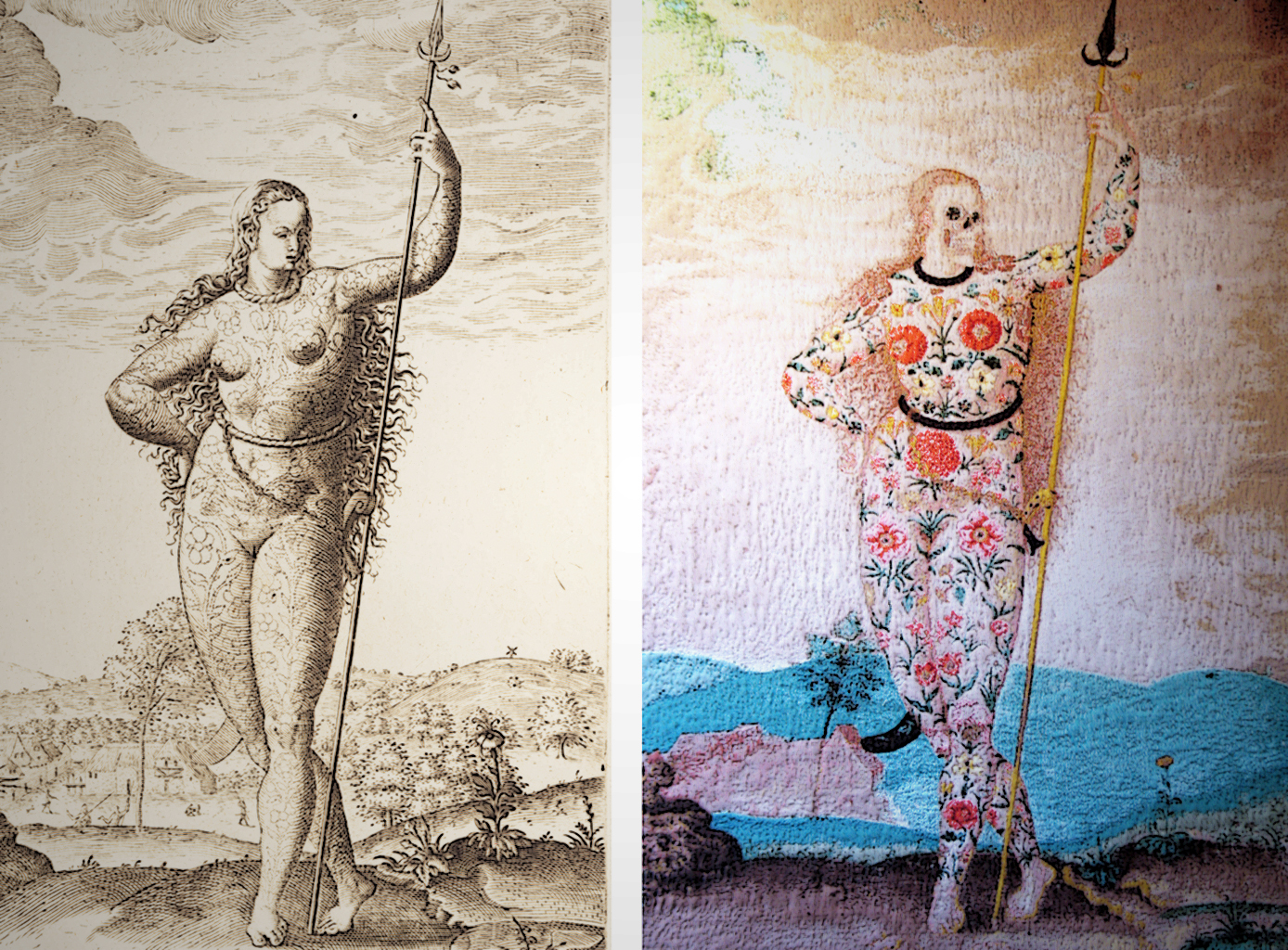
So here are two works, one exhibited in a travel collection in 1590, the other exhibited in a Scottish art gallery in 2013. The processes that produced them are certainly vastly different: one created from manual engraving and the 16th century printing press, the other a tapestry woven with the aid of 21st century digital tools. Yet at their source, there is one same painting –and how many other creative works may have been inspired by this same source? A force of nature it is indeed.
–Iris Papaemmanouil
Reprographics Technician
Reblogged this on Lucifer Luceafar Luceafarul.